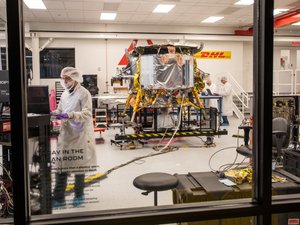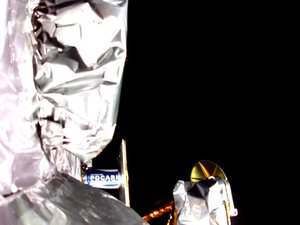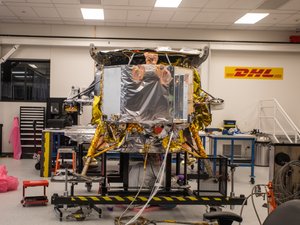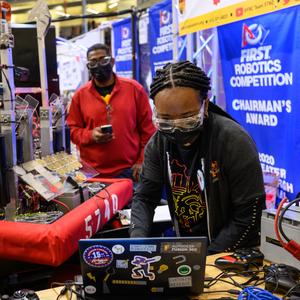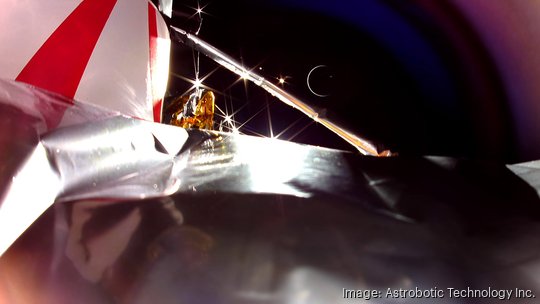
After spending more than 10 days in space, Astrobotic Technology Inc. announced that its Peregrine Lunar Lander will be returning back to Earth as part of a "controlled re-entry" over open ocean.
It's far from the intended final target for the Pittsburgh-based company's lander, which was racing to be the first commercial spacecraft to land on the surface of the moon as part of NASA's Commercial Lunar Payload Services program. Astrobotic, which employs about 200 people out of its 49,000-square-foot North Side headquarters, received a $108 million contract to do so and it has received a $199 million contract from NASA for its forthcoming Griffin lander, which is four times the size of Peregrine and could set out for its lunar landing attempt later this year.
According to current projections, Astrobotic is targeting the South Pacific Ocean about 1,000 miles north off the coast of New Zealand as the final resting point for Peregrine, or what remains of it, that is, following an expected burn-up in Earth's atmosphere. The company expects Peregrine to make its impact with the ocean around 4 p.m. local time in Pittsburgh on Thursday.
"A safe re-entry is our top priority," the company said in a statement. "Astrobotic continues to work closely with NASA and other relevant government authorities to keep everyone informed and to solicit feedback as appropriate."
Astrobotic said it will hold a media briefing on Friday, Jan. 19, to provide "a comprehensive mission update" on Peregrine's maiden voyage.
It's expected to take months before Astrobotic will learn what actually went wrong with Peregrine that caused it to have propulsion-related anomalies shortly after separating from United Launch Alliance's Vulcan Centaur rocket on Jan. 8.
The mission has been far from a total loss, the company said.
On Jan. 11, Astrobotic reported that all 10 of its payloads onboard its Peregrine Lunar Lander that require electrical power have been successfully supplied with it. Additionally, nine of these payloads are able to communicate with the lander. Its 10 other payloads, for a total of 20 onboard, are passive machines or instruments that don't require power.
The company and NASA have stated that other valuable insights have been and will continue to be gained from this mission.
"Each success and setback are opportunities to learn and grow," Joel Kearns, deputy associate administrator for exploration at NASA’s Science Mission Directorate in Washington, D.C., said in a statement on Jan. 8. "We will use this lesson to propel our efforts to advance science, exploration, and commercial development of the moon."
